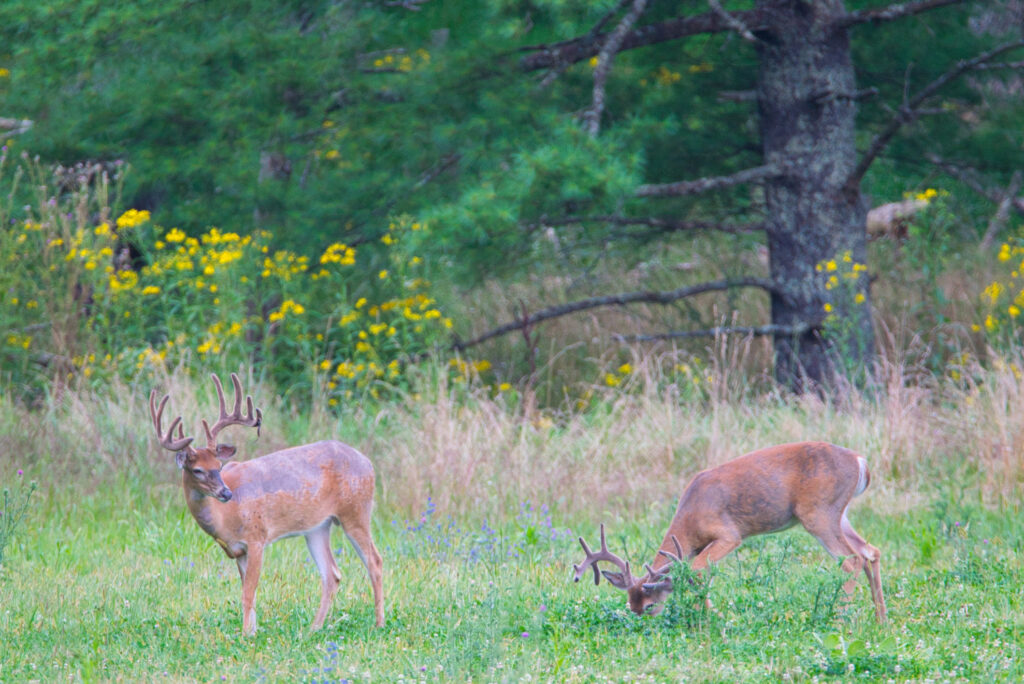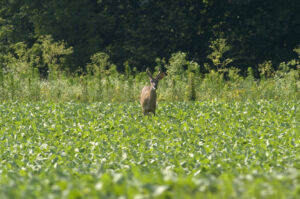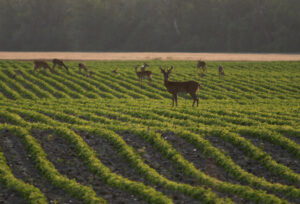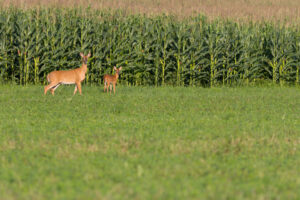No items in shopping pack.
April 3, 2024
Tips for Planting & Maintaining Food Plots for Whitetail Deer
Share:

If you’d like to lure more hunters to your land in search of the perfect deer, you must first attract and retain the deer themselves.
And a healthy food plot helps you do just that.
Food plots offer nutritious plants that attract and boost the health of game animals. They are indispensable for improving the quality of deer herds on your land and play a critical role in wildlife management.
A sustainable food plot strategy includes many decisions including what, when and where to plant. This article includes tips for choosing, planting and maintaining food plots on your property.
Your Food Plot Strategy
Much like humans, deer are creatures of habit. They travel familiar routes and return to the same locations. Food plots ensure a steady supply of healthy forage so that your property will be one of their favorite places to go.

When planting food plots, you want crops that will mature and stay visible during your local hunting season. It’s also a good idea to plant more than one food plot and rotate crops in different locations.
When Should You Plant?
In most regions, natural food sources are most abundant in spring and fall. You can fill in the gaps by planting appealing crops that’ll peak in late summer and winter. Late summer is also a good time to plant crops for attracting deer during the fall hunting season.
As an added bonus, many food sources that attract whitetail deer also happen to be quite appetizing to other game animals, including turkey, rabbits, quail and many songbirds.
Evaluating Your Property
If you’ll be planting a food plot for the first time, the best starting point is to study your land.
Observe how the deer move on and around your property. Keep track of where they travel and their favorite food sources. Most deer have a home range of about one square mile in densely populated areas and up to 15 square miles in more sparsely populated regions.
Using Google Earth or other apps, study a map of your property and surrounding areas. Write down the locations of rubs, scrapes and other signs of deer presence, such as feeding, watering and bedding activity. Indicate both natural and agricultural sources of nutrition.
Based on your findings, make a plan to offer high quality, nutritious crops that aren’t already available to the deer on your land.
Types of Food Plots
You can use food plots to attract deer to your property during hunting season. A second category is designed to provide nutrition for deer in your area.
Hunting Plots
Hunting plots are where you’ll plant crops to attract deer during hunting seasons. They are typically located in clearings, near bedding areas and other places with high visibility from a stand or blind. It’s a good idea to trim shooting lanes and sightlines before the season begins.
Nutritional Plots
Nutritional plots provide a continuous source of healthy food year round. They tend to be larger and more exposed than hunting plots.
Good locations for a nutritional plot include near familiar travel routes, tall grasses, wooded areas and other places where deer like to take cover. Recommended food sources should include protein and minerals for healthy growth and development.
Plants to Include in a Food Plot
What should you plant in a food plot?
The answer depends on the characteristics of your property, including location, climate and your individual deer population. Many landowners choose a blend of crops for optimal nutrition and variety. A good rule of thumb is to include perennials, warm-season annuals, cereal grains and brassicas.
Clover
Clover is a hardy plant that offers high protein and overall nutritional value. It can withstand unpredictable weather patterns, periods of drought and less-than-perfect soil. Most varieties of clover are perennials, which means they will continue to grow year after year once you plant them.
Brassicas
Familiar brassicas include turnips and radishes. These plants are high in carbohydrates, natural sugars and micronutrients that deer love. They provide an excellent source of energy during the fall and winter.
Soybeans

Soybeans are high in protein and good choices for the summer months. They promote growth and development in young deer and survival during the winter.
Grains
Cereal grains like oats and wheat are easy to grow. They are great sources of nutrition during fall and winter.
Steps for Planting a Food Plot
If you’re new to planting food plots or crops in general, here are the steps you’ll need to follow.
Soil Testing
Healthy crops begin with healthy soil. You can obtain a soil test kit from your county extension office. Based on the results, you can adjust the soil pH and nutrient content as needed before planting. The soil test will help you select the appropriate levels of nitrogen, phosphorus and potassium to add to your soil.
Clear the Land
Use an herbicide to eliminate weeds and other unwanted vegetation that would otherwise compete with your crops for nutrition. Check the soil a week later and spray again if any weeds remain. Once the plot is cleared, drag or rake the soil until it is smooth and ready for planting.
Plant the Seeds
Watch the weather, as the best time to plant is right before a light rainfall. Irrigate if needed, because dry soil delays the growth of your seeds. Calculate the amount of seed for each particular plant and spread in an even pattern. Avoid overcrowding, as this will hinder plant development. You can plant with a hand-cranked spreader for small plots or a vehicle-mounted spreader for larger plots.
Cover, Protect & Fertilize
Make sure the seed is pressed firmly into the soil at the correct depth, which varies by individual crops. Take measures to protect the plot from grazing until the crop is mature. Avoid over-fertilizing your food plot to avoid weeds. A good rule of thumb is to apply half the recommended amount at planting and the remaining have a few weeks later.
Year-Round Food Plot Maintenance
Use game cameras and other methods to monitor food plots for deer traffic and other activity. This helps you gauge browse pressure and make adjustments to your plot as needed.

You can scout hunting and nutritional plots during the spring and summer. Limit in-person visits as the season approaches, so the deer can feel safe and undisturbed when feeding. Notice wind direction and take scent control measures to avoid alerting deer to your presence.
Maintain food plots by mowing cereal and clover during the season. Brassicas and bean plants are easy to maintain and don’t require mowing.
Lease Your Land to Interested Hunters
Food plots help you attract more deer to your property, which also helps you attract more hunters. You can also make it easy for hunters to find you by leasing your land through Huunt.
Your membership lets you set the terms of your lease, including game, amenities, sleeping arrangements, dates and pricing. You can also provide photos of your property. Sign up for a Base or Premium membership today and start earning extra income for your land!
Start Your Adventure Today
We make it simple to list and lease land, book guided hunts and more. Find your next hunting spot or guided trip. Earn extra income by letting others enjoy your land. HUUNT helps you make the most of every opportunity. Become a member today!